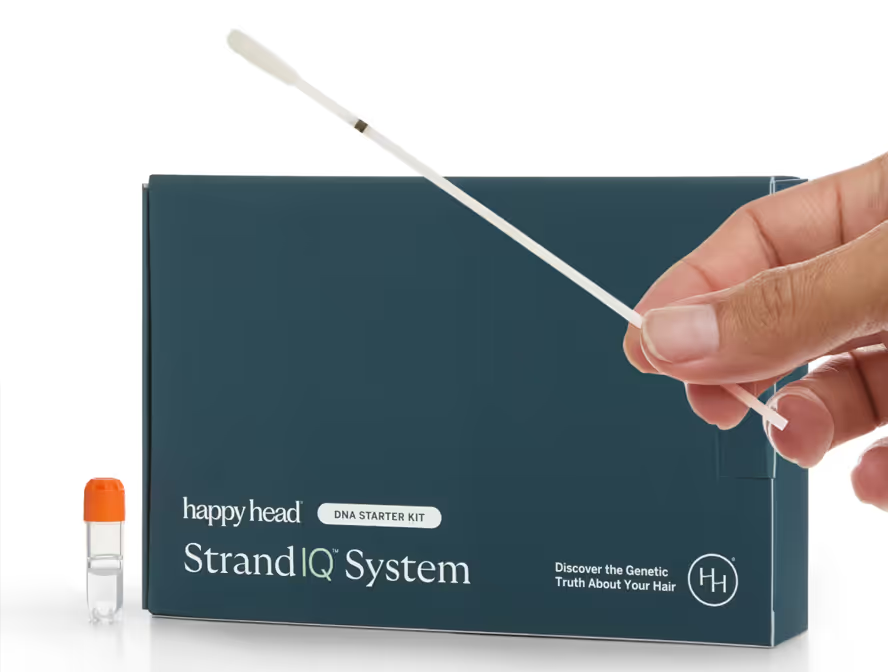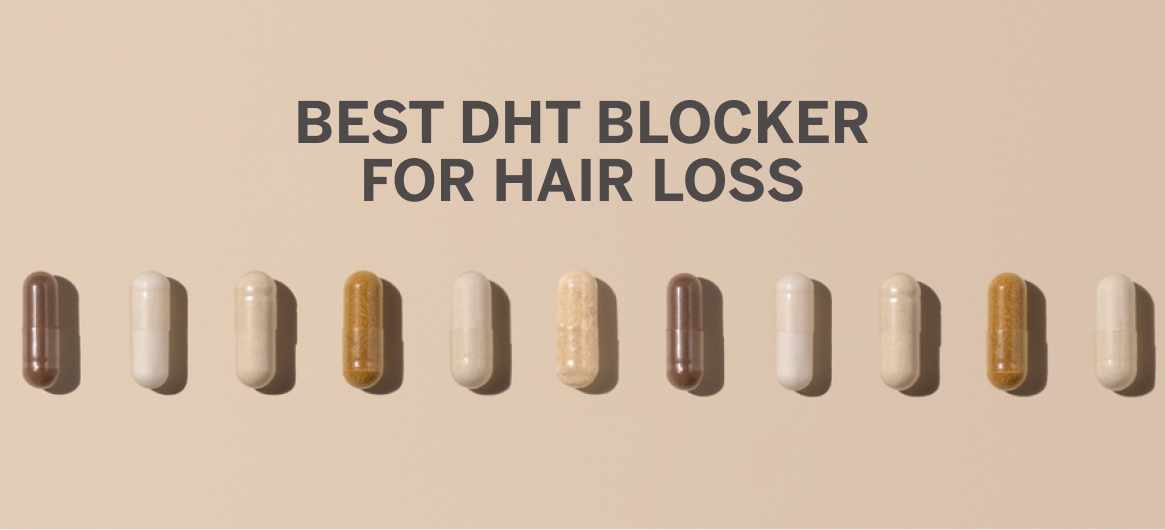Hair loss is a problem faced by many, and there are an overwhelming number of options out there when it comes to managing it. One of the more popular treatments is spironolactone.
If you’re considering spironolactone therapy, it’s natural to have questions about its effectiveness and safety. This guide is here to provide the clarity and confidence you need to make informed decisions about your treatment.
Learning how to treat hair loss is the first step to making it a more achievable goal, helping you feel more in control of your path toward healthier hair.
What Is Spironolactone?
Spironolactone is a medication commonly prescribed for conditions such as high blood pressure and heart failure.
However, over time, doctors discovered its benefits beyond those uses, particularly for treating some of the hormonal imbalances that can lead to hair loss.
By acting as an antiandrogen, spironolactone reduces levels of male hormones, such as testosterone and dihydrotestosterone (DHT), which can contribute to thinning hair and hair loss, particularly in women.
Originally developed in the 1950s, spironolactone blocks specific kidney receptors, helping the body remove excess sodium and water while keeping potassium levels stable.
It also inhibits androgen production and blocks androgen receptors, effectively addressing issues such as acne, unwanted hair growth, and hormonal hair loss.
For hair loss, spironolactone’s ability to target hormone pathways is key in preventing hair follicle miniaturization, a process that causes hair follicles to shrink, causing hair to become thinner and eventually fall out.
So, if you believe that a hormone imbalance is behind your hair loss, spironolactone can be an effective treatment option.
How Does Spironolactone Work for Hair Loss?
Spironolactone is an effective treatment for hair loss because it targets the hormonal pathways that cause hair follicles to shrink.
Addressing androgens, particularly DHT, works to prevent further thinning, helping maintain healthier hair.
Mechanism of Action
The strength of this treatment lies in its role as an antiandrogen. It blocks androgen receptors, preventing hormones such as testosterone and DHT from attaching to these sites on the hair follicles.
This is crucial, as DHT can cause follicles to shrink and produce thinner hair over time.
Additionally, spironolactone inhibits the enzymes responsible for producing androgens, further reducing the levels of these hormones in the body.
By lowering both the production and activity of androgens, spironolactone addresses the root causes of hormonal hair loss.
This two-pronged approach can help slow hair thinning and, over time, support the growth of thicker, healthier hair.
Spironolactone vs. Finasteride
When exploring treatment options, finasteride is another commonly discussed medication. Spironolactone and finasteride both target hormonal pathways but work in different ways and are suited to different individuals.
Finasteride reduces DHT levels by inhibiting the enzyme that converts testosterone into DHT, which helps prevent the shrinking of hair follicles. This treatment is primarily prescribed to men, as it can cause birth defects if used by women who are or may become pregnant.
On the other hand, spironolactone is frequently used for women, as its antiandrogen effects are safer for female patients.
While finasteride reduces DHT levels throughout the body, spironolactone works by blocking androgen receptors and reducing androgen production, offering a different approach.
For women experiencing hair loss linked to androgens, oral or topical spironolactone offers a tailored treatment that meets their specific needs. A consultation with a dermatologist will help determine the most appropriate treatment based on individual circumstances.
Benefits of Using Spironolactone for Hair Loss
Spironolactone offers two key benefits for individuals dealing with hair loss, particularly when hormonal imbalances are involved.
Effectiveness in Women
For women experiencing androgenetic alopecia (male or female pattern hair loss) or other forms of hormonal hair loss, spironolactone can be a helpful solution.
Research has shown that it can significantly reduce hair shedding and improve hair density. By blocking the effects of excess androgens, spironolactone helps preserve existing hair and promotes the growth of new, thicker strands.
For women with conditions such as polycystic ovary syndrome (PCOS), which often leads to higher androgen levels, spironolactone can help manage both hair loss and other symptoms such as acne and unwanted hair growth.
By addressing the hormonal imbalances at the root of these issues, spironolactone helps restore balance. With consistent use, patients typically begin to notice improvements after 3–6 months, with continued progress over time.
Combination With Minoxidil
Combining spironolactone with minoxidil, a well-known topical treatment that stimulates hair growth, can amplify the results.
While spironolactone tackles hormonal causes of hair loss, minoxidil works directly to stimulate hair follicles, increase blood flow, and extend the growth phase of the hair cycle. This combined approach helps address hair loss from both hormonal and circulatory perspectives.
Studies show that using spironolactone and minoxidil together often yields better results than using either treatment alone. Patients typically experience increased hair density and faster regrowth.
Many companies offering personalized treatments combine these active ingredients to create tailored solutions for each individual.
To ensure the best results, it's important to work with a dermatologist who can recommend the right combination and dosage for your needs.
Combining treatments can offer enhanced effectiveness, but it’s essential to have professional guidance to monitor potential side effects and interactions.
Dosage and Administration
Both oral and topical spironolactone can be effective choices. Using your treatment correctly and consistently, whether orally or topically, ensures it targets hormonal imbalances effectively while minimizing side effects.
Consistent use, along with guidance from your dermatologist, is key to maximizing its effectiveness.
Oral Spironolactone
Oral spironolactone is the most common form of treatment for hair loss. Typically, doses range from 50 mg to 100 mg per day, depending on the severity of your hair loss and your individual needs.
Treatment usually starts at a lower dose, gradually increasing to allow your body to adjust and reduce the risk of side effects.
To improve absorption and minimize stomach upset, it’s best to take spironolactone with food. It’s important to take it consistently at the same time each day to maintain stable levels of the medication in your system.
Regular check-ins with your healthcare provider are crucial while taking oral spironolactone. These appointments typically involve monitoring your potassium levels and kidney function to ensure the medication works safely.
Topical Spironolactone
Topical spironolactone is a good alternative, offering a more targeted treatment for those concerned about systemic side effects.
When applied directly to the scalp, it treats hair follicles without affecting hormone levels throughout the body.
Topical spironolactone is usually available in a cream or solution form. To use it, simply massage a prescribed amount into the affected areas of the scalp once or twice a day. Apply it to a clean, dry scalp for the best results.
It may take several months to see visible improvements with topical spironolactone, so patience is key.
Who Can Use Spironolactone for Hair Loss?
The suitability of spironolactone treatment varies depending on individual factors such as gender, hormonal balance, and medical history.
While it is most commonly prescribed for women dealing with hormonal hair loss, it may also be beneficial for some male patients under specific conditions.
Suitability for Women
Spironolactone is particularly effective for women experiencing hormonal hair loss, such as androgenic alopecia or hair thinning related to polycystic ovary syndrome (PCOS).
However, women of reproductive age should use caution, as spironolactone can cause birth defects if taken during pregnancy.
For this reason, it is typically used in conjunction with reliable contraception. Postmenopausal women may also benefit from spironolactone, as hormonal fluctuations can continue to play a role in hair thinning during this stage of life.
Considerations for Men
Spironolactone is less commonly prescribed for men due to its antiandrogen effects, which can sometimes lead to side effects such as reduced libido or breast enlargement.
However, under certain circumstances, men with specific hormonal imbalances may use the medication under close medical supervision.
Men seeking treatment for hair loss often consider alternative options, such as finasteride, which targets DHT more directly without the broader antiandrogen effects of spironolactone.
Dermatologists will need to evaluate each case individually to determine the best course of treatment based on the patient's needs and health.
Common Side Effects of Spironolactone
Spironolactone is generally well tolerated, but like all medications, it may cause side effects. With oral spironolactone, some people experience increased urination, mild dizziness, breast tenderness, menstrual changes, or low blood pressure.
Because the drug also reduces androgen activity, rare side effects such as breast enlargement in men or decreased libido may occur.
Topical spironolactone usually produces fewer systemic effects, but mild scalp irritation, redness, or dryness can occasionally develop. Most side effects are mild and usually improve as the body adjusts or with simple dose adjustments.
Serious complications, such as high potassium levels, are uncommon and typically avoided through routine monitoring. Dermatologists carefully tailor treatment to minimize risks and will adjust therapy if needed.
The reassuring reality is that most patients tolerate spironolactone well, and with proper medical supervision and guidance, side effects are manageable while allowing the medication to provide meaningful support in reducing hair loss.
How To Manage Side Effects of Spironolactone
Most side effects of spironolactone can be reduced with simple strategies. To minimize dizziness, rise slowly from sitting or lying positions and stay well hydrated.
Because spironolactone can raise potassium levels, avoid excess potassium-rich foods like bananas, spinach, and avocados unless your doctor advises otherwise. If breast tenderness or menstrual changes occur, adjusting the dose or timing of medication may help.
For topical use, applying only the recommended amount and using a gentle shampoo can reduce scalp irritation. Regular blood tests and open communication with your dermatologist ensure that any side effects are promptly managed and treatment remains safe.
How Spironolactone Can Support Your Hair Restoration Journey
Spironolactone targets the hormonal causes of hair thinning, especially for women, and can be a powerful way to regain both confidence and control.
Whether used alone or combined with other treatments such as minoxidil, spironolactone is an effective option for managing hair loss.
Working closely with a dermatologist ensures the treatment is safe and optimized for your unique needs. Personalized care and informed choices are crucial to achieving successful results.
For those ready to take the next step in their hair restoration journey, exploring customized solutions offered by hair growth specialists is a great way to find a treatment plan that works best for you.
With the guidance of experts, you can move toward meaningful progress and renewed self-esteem. Your path to overcoming hair loss is achievable with the right support and knowledge.
Ready to get started on your hair restoration journey? Connect with Happy Head today and take the first step toward a happier, healthier head of hair.
Frequently Asked Questions
What is spironolactone used for?
Spironolactone is primarily used to treat conditions such as high blood pressure and heart failure by reducing fluid buildup. It is also used off-label to address hormonal imbalances that can lead to hair loss, acne, and unwanted hair growth, particularly in women.
How does spironolactone help with hair loss?
Spironolactone helps with hair loss by blocking androgen receptors and reducing the production of male hormones, such as testosterone and DHT. This action prevents these hormones from shrinking hair follicles, a key cause of hair thinning and loss, particularly in women.
Can spironolactone be used in combination with other treatments?
Yes. Spironolactone can be used alongside other treatments, such as minoxidil, to enhance hair growth. This combination addresses hair loss from both hormonal and circulatory perspectives. It’s important to work with a healthcare provider to determine the best combination and dosages for your needs.
What are the common side effects of spironolactone?
Common side effects of spironolactone can include increased urination, changes in menstrual cycles, breast tenderness, stomach discomfort, dizziness, and fatigue. Most of these side effects are temporary and tend to subside as your body adjusts to the medication.


.avif)






